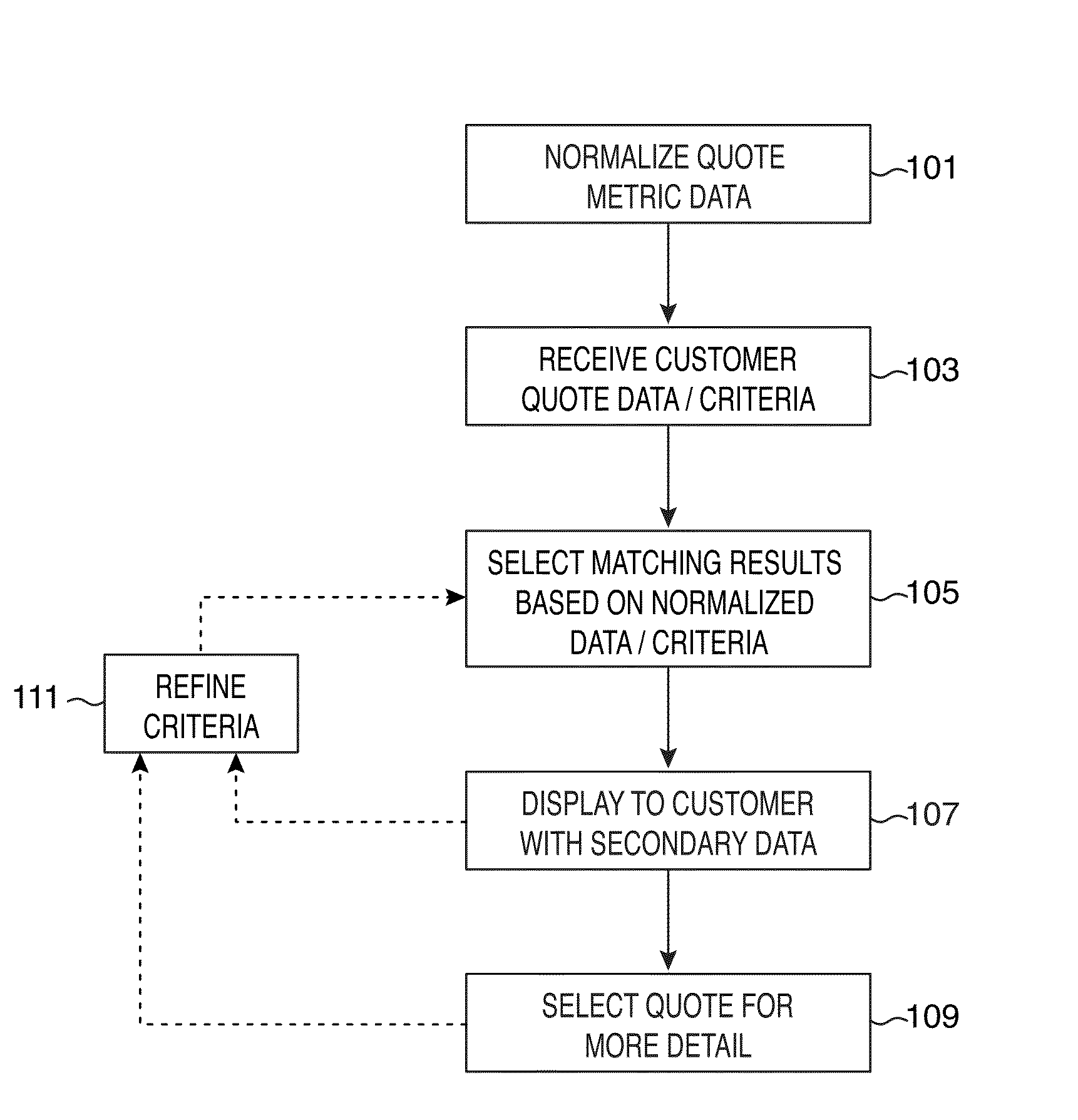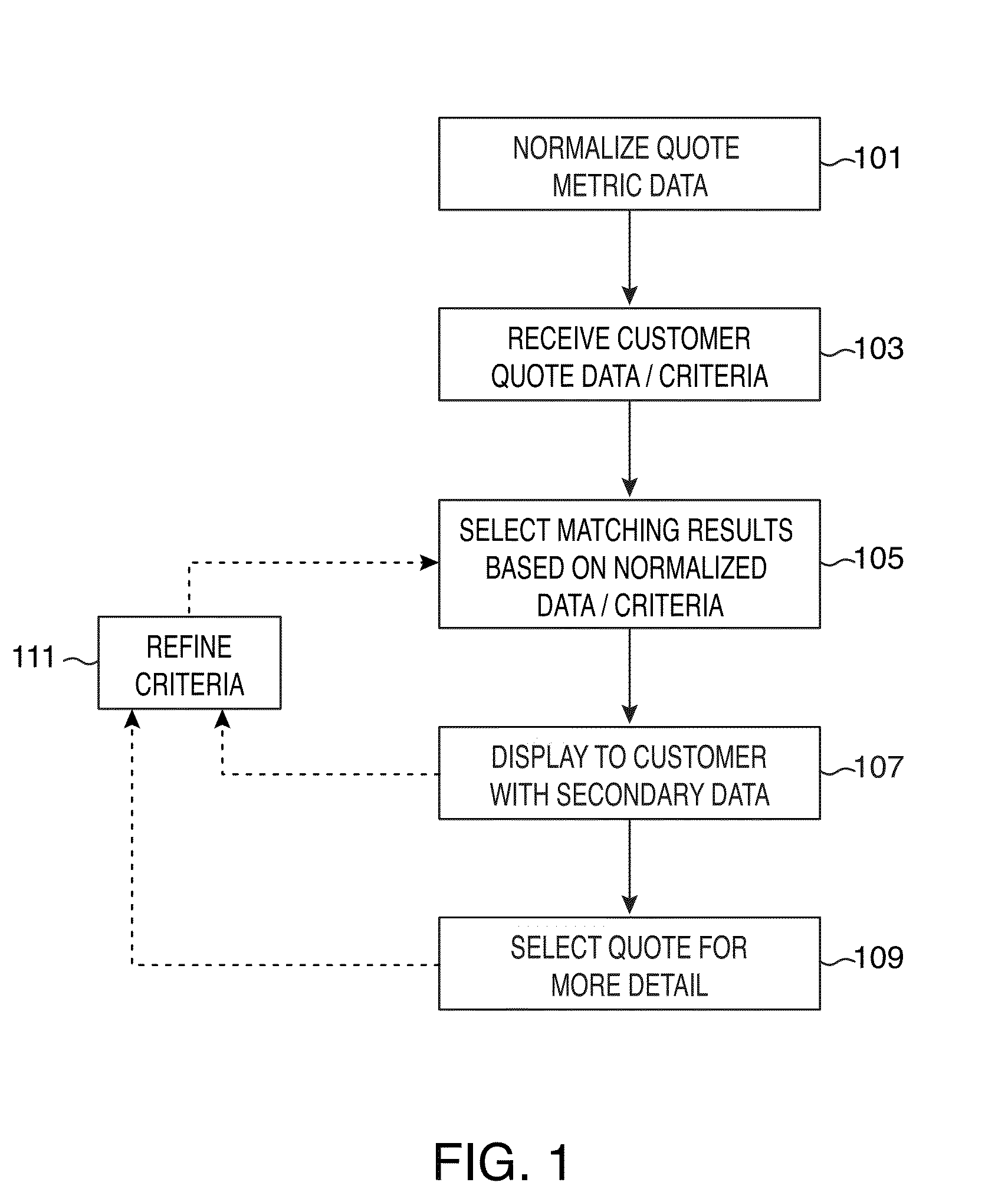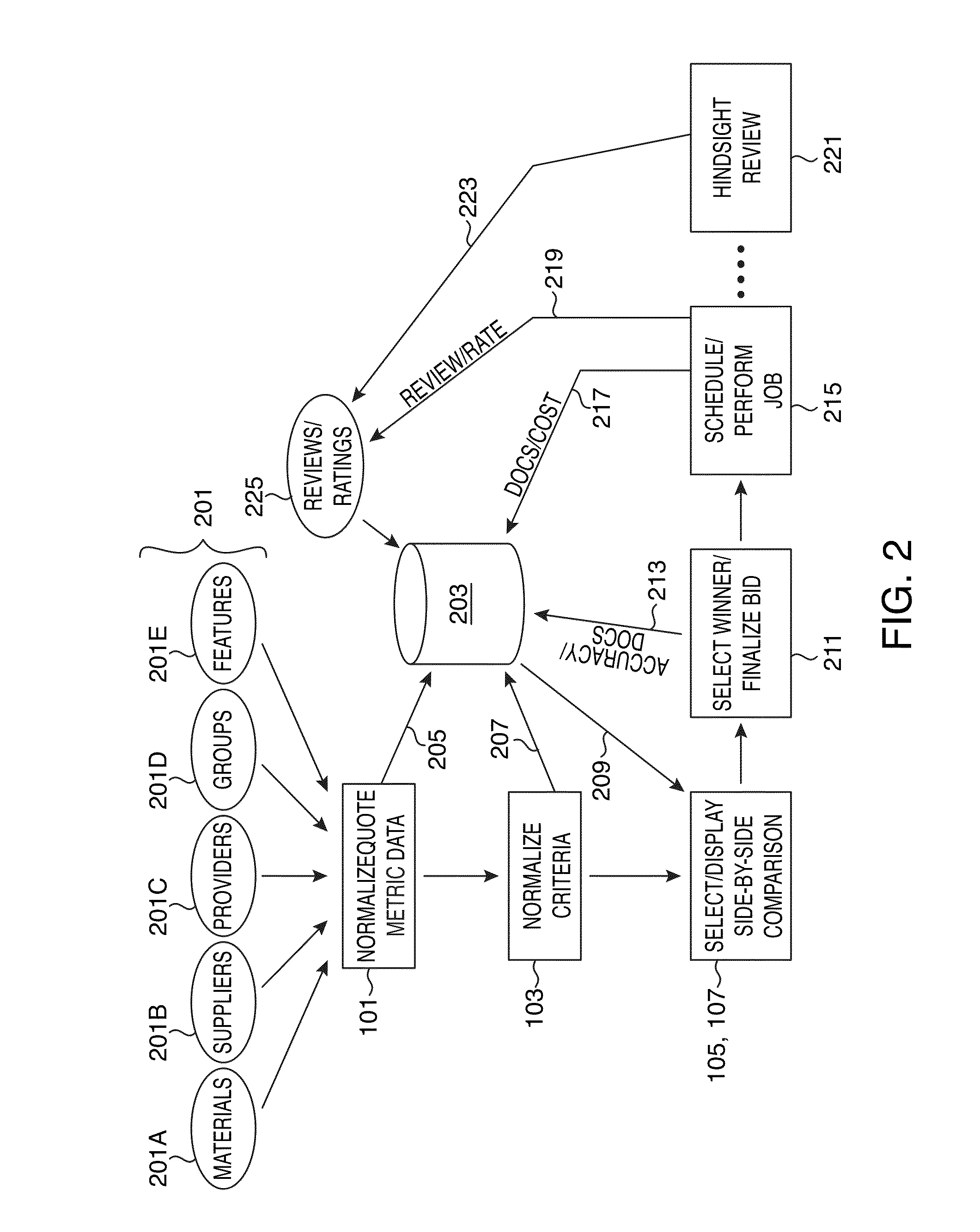Getting quotes and estimates for certain types of products and services is difficult and time-consuming.
The difficulty is in part because service providers and customers both suffer from a lack of complete information.
Customers do not know provider material or labor costs, and providers do not know the details of the customer project.
However, this does not solve the information disparity for the customer, who often has only the final bid number, devoid of detail on the calculations that comprise it.
This makes comparing that bid with another contractor's bid difficult.
Further, where there are major gaps between two suppliers, the customer lacks information about
service quality, which could explain pricing disparities.
For example, do bids differ because one provider does better work (and charges more), or is a supplier more expensive because he pays more for materials?
The bidding process presents other difficulties as well.
This adds to the difficulty in comparing bids.
Getting multiple bids also means multiple installers physically visit the location and take measurements, resulting in needless
rework and wasted time.
Moreover, many providers take the opportunity to engage in high-pressure on-the-spot sales pitches, asking about other bids in an attempt to win the job on the spot before the
consumer can think through options, or comparison shop.
Further complicating things, the costs of materials and labor can vary wildly.
This is not only because of quality differences, but differences in provider price models.
Where these prices are not included in the bid detail, the customer has no way of knowing whether a provider is buying the materials cheaper and pocketing the difference instead of passing the savings on to the customer.
Providers also do not price their services in uniform fashion.
Such flat-rate pricing is generally limited to a certain tier or quality of material, limiting the customer's options.
However, another installer may charge only $50 per
square foot, but require the customer to pay actual costs for material, including waste, which the customer is generally not qualified to estimate.
Further complicating this landscape, material suppliers sometimes sell products only through specific distribution chains, or sign exclusivity agreements limiting availability for their products to certain service providers.
This makes it virtually impossible for customers to simply pick a material that will work in their homes, and then get a
list of installers who can use it.
Other common problems complicate bidding even further.
Existing bidding
software merely assists an individual provider with preparing a bid, but does not provide for apples-to-apples comparisons between providers.
This is in part because there is so much variance between material costs, labor costs, business models, and pricing
metrics used by contractors and suppliers.
Even if the customer is able to select the best bid, there remains the issue of managing contracts, change orders, and invoices, and scheduling delivery and installation, which can take days or weeks (sometimes months), and delivery time is not always precisely known in advance.
Providers are generally reluctant to schedule installation until they know materials will be available.
Further, while there exist web sites for rating service providers, such as Angie's
List™ they do not allow for side-by-side comparisons of provider quality in the context of a quote or bid for a specific project.
Thus, a user cannot, for example, get a side-by-side comparison quote between two providers in addition to review aggregation to add context to the data.
That is, where two providers differ wildly in price for the same job, there is currently no way to assess or determine whether or to what extent that difference may be a function of
service quality and / or professionalism.
Although a customer could, at least in theory, do a side-by-side comparison of bids on pencil and paper if the customer had access to all the required information, the practical reality is that the variables and differences in how each provider prices services and materials differ so wildly that the average
consumer is unlikely to be able to accurately run all of those calculations to produce a fair comparison.
Moreover, the time required for that type of intellectual labor often far exceeds the patience and available free time of the customer.
Ultimately, it's effectively impossible to compare bids on an apples-to-apples basis in real time.
At the end of the day, it's impossible for the customer to independently get accurate apples-to-apples comparison between two contractors for the same job, and the bidding process generally results in a great deal of
lost time and inefficiency, not only for the customer, but also for the installers, who are constantly called out to take redundant measurements or price out projects that go nowhere.
 Login to View More
Login to View More  Login to View More
Login to View More 


